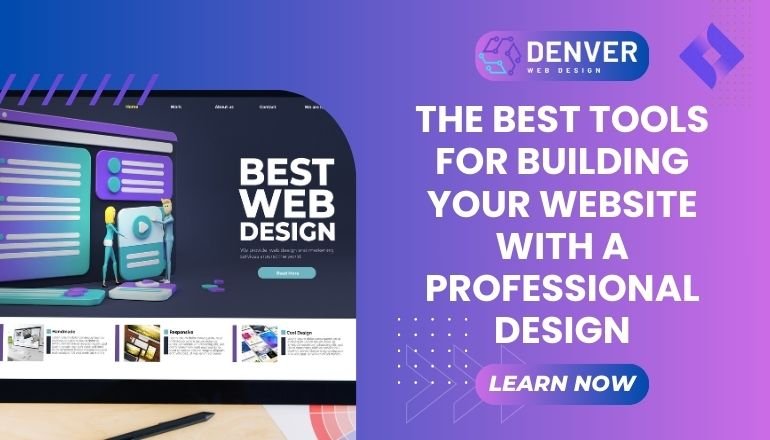
Building a professional and engaging website is a crucial step toward establishing a robust online presence. Whether you’re running a small business or managing a personal brand, the right tools and techniques can help you create a functional, visually appealing, and user-friendly site. In this guide, we’ll discuss the best practices in web design, explore key components of responsive web design, and highlight tools that simplify the process. A well-designed site solves common problems like slow load times, poor navigation, and low search engine rankings, setting you up for success.
At Web Design Denver, we emphasize creating websites that are visually appealing and optimized for performance—ensuring you leave a lasting impression on your audience.
What is Web Design and Development?
Web design and development involves creating websites that offer seamless navigation, appealing aesthetics, and robust functionality. It encompasses various aspects, from designing the layout (web design) to coding the site’s backend (web development). Modern practices like responsive web design ensure that websites work well on all devices, from desktops to smartphones, adapting seamlessly to different screen sizes.
Concepts such as the mobile-first approach and adaptive design focus on prioritizing the user experience, emphasizing speed, clarity, and accessibility. This ensures that visitors have a pleasant experience regardless of the device they use.
Why is Professional Web Design Essential for Your Website?
A professionally designed website can transform how customers perceive your brand. Here’s why investing in top-tier web design matters:
- Improved User Experience (UX): A clean, intuitive layout encourages visitors to stay longer and engage with your content. Incorporating UX design principles enhances navigation and overall satisfaction.
- Search Engine Optimization (SEO): Optimized websites rank higher on search engines. Features like responsive design, fast load times, and optimized content contribute to improved search engine visibility.
- Business Growth: A well-designed site fosters trust, encouraging conversions and helping you achieve better ROI. Whether it’s for an e-commerce platform or a company profile, thoughtful web design is pivotal.
Web Design Denver understands these priorities, helping clients create websites tailored to both user and business needs.
Key Features of a Professional Website
When building a website, certain features are non-negotiable for success:
- Responsive Design: Ensures compatibility across all devices, crucial for modern users accessing your site on the go.
- Content Management System (CMS): Tools like WordPress or Shopify simplify content updates and customization.
- SEO Optimization: From keyword integration to meta descriptions, every element should be geared towards improving your Google rankings.
- User-Friendly Navigation: Clear menus, intuitive layouts, and conversion-optimized CTAs guide visitors effectively.
- Secure Payment Gateways (For E-commerce): A vital component for trust and seamless transactions.
At Web Design Denver, we incorporate these components to build functional websites that look great and perform even better.
Best Practices for Web Design and Development
To achieve excellence in web design, keep these practices in mind:
- Adopt a Mobile-First Approach: With mobile users outnumbering desktop users, prioritize creating designs that cater to smaller screens.
- Speed Optimization: Users expect websites to load within 2-3 seconds. Tools for site speed optimization can help meet this standard.
- Incorporate Clear CTAs: Direct users toward actions like signing up or purchasing through compelling CTAs.
- Focus on Accessibility: Ensure your website adheres to web accessibility standards for inclusivity.
By following these practices, Web Design Denver creates websites that balance aesthetics and functionality, ensuring long-term success.
Common Mistakes to Avoid in Web Design
Avoid these common pitfalls when designing or developing a website:
- Neglecting SEO: Ignoring SEO best practices for web design can harm your site’s visibility and traffic potential.
- Complicated Navigation: Overloading the menu with too many options can confuse visitors. Stick to streamlined layouts.
- Skipping Cross-Browser Compatibility Testing: Ensure your site looks and functions properly across different browsers.
Correcting these mistakes can significantly enhance your website’s performance and user experience.
Key Takeaways
Creating a professional website requires a mix of thoughtful design, smart development practices, and powerful tools. From responsive web design to conversion rate optimization, every element must work together to create a seamless user experience that supports business goals.
Are you ready to build a website that stands out? Partner with Web Design Denver to craft a website that’s visually stunning, technically sound, and designed for growth.






